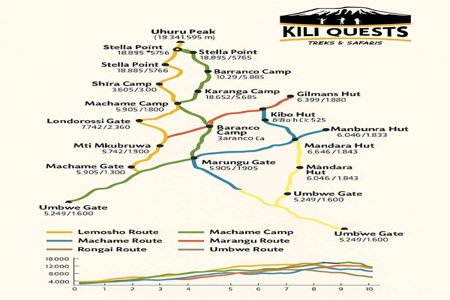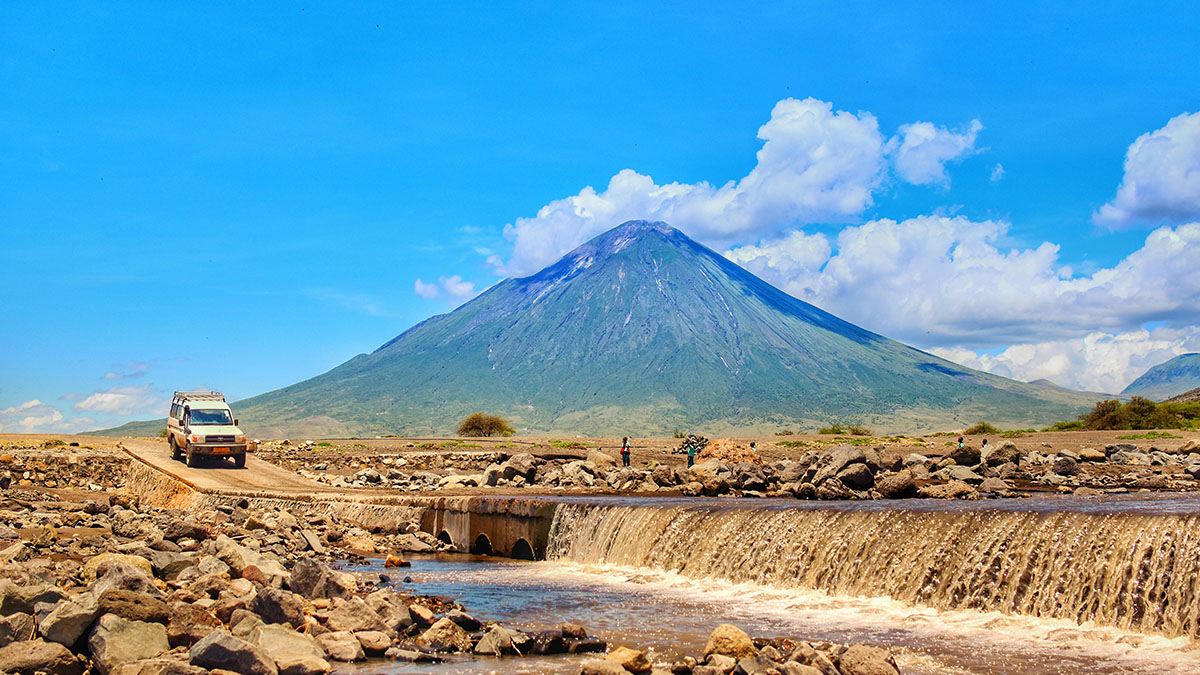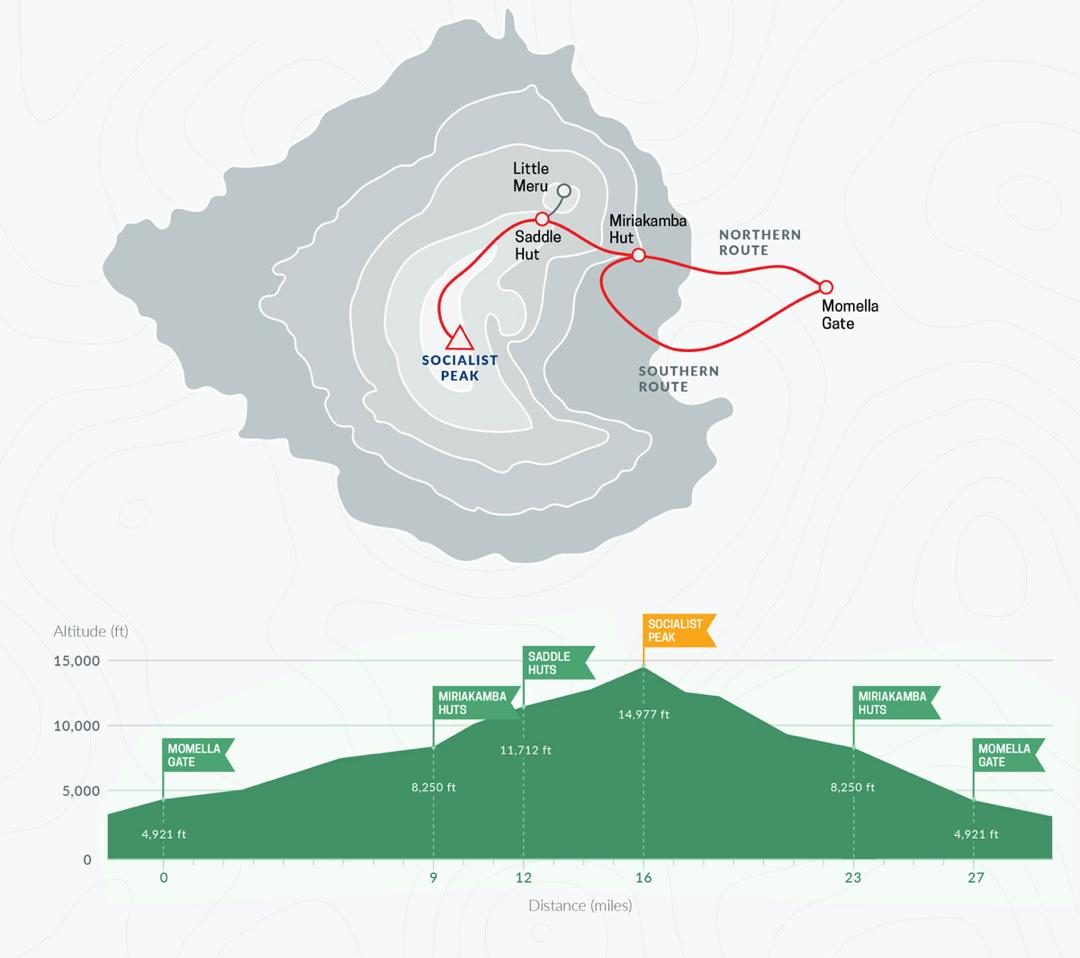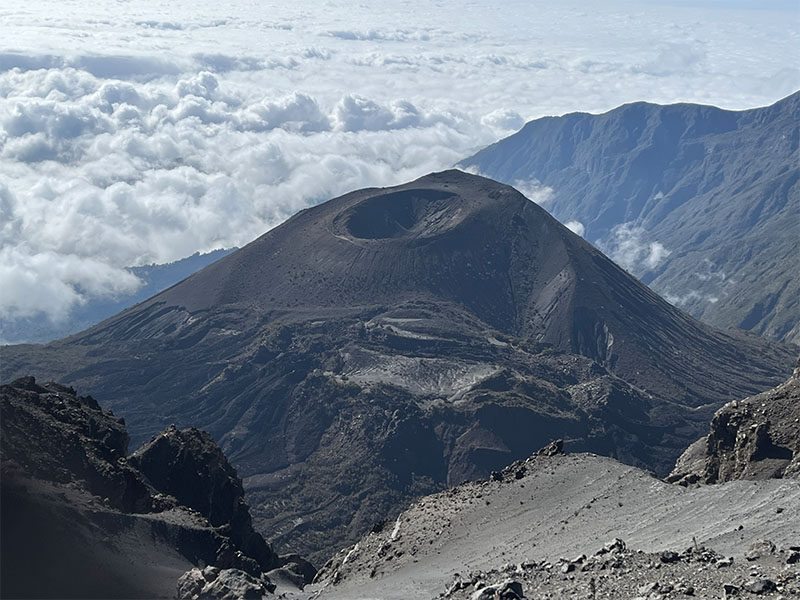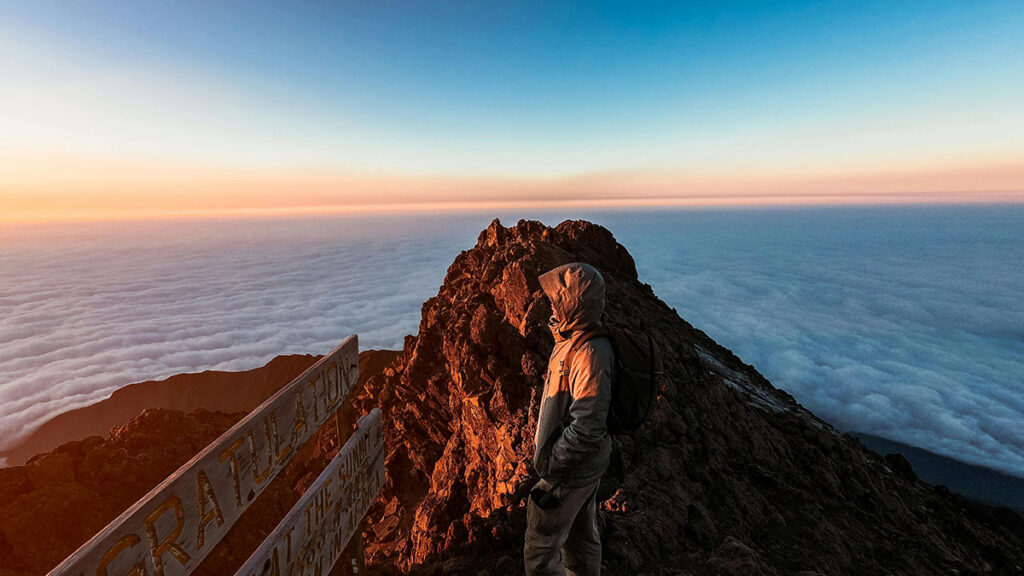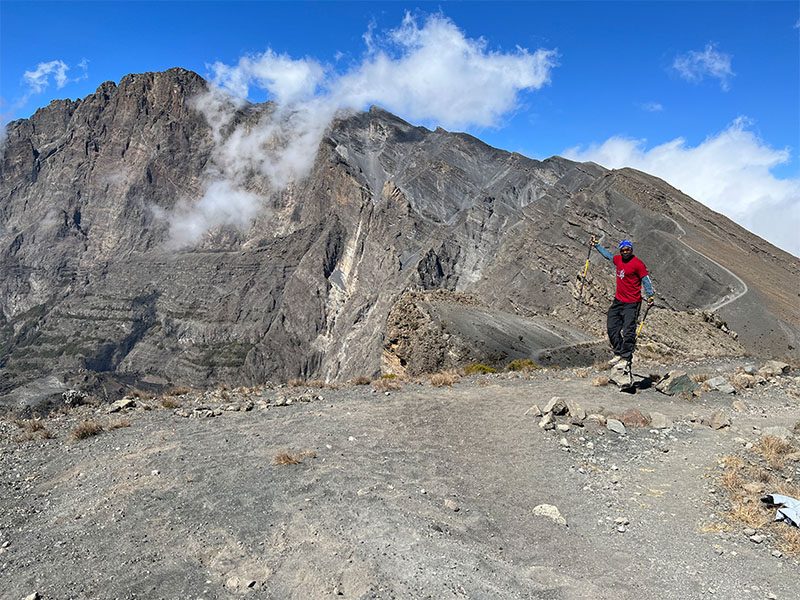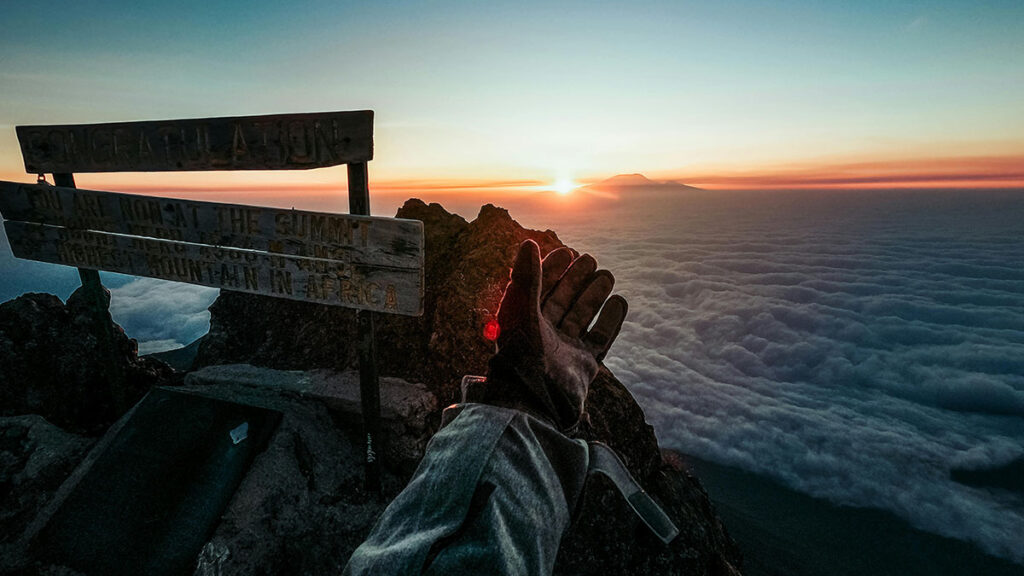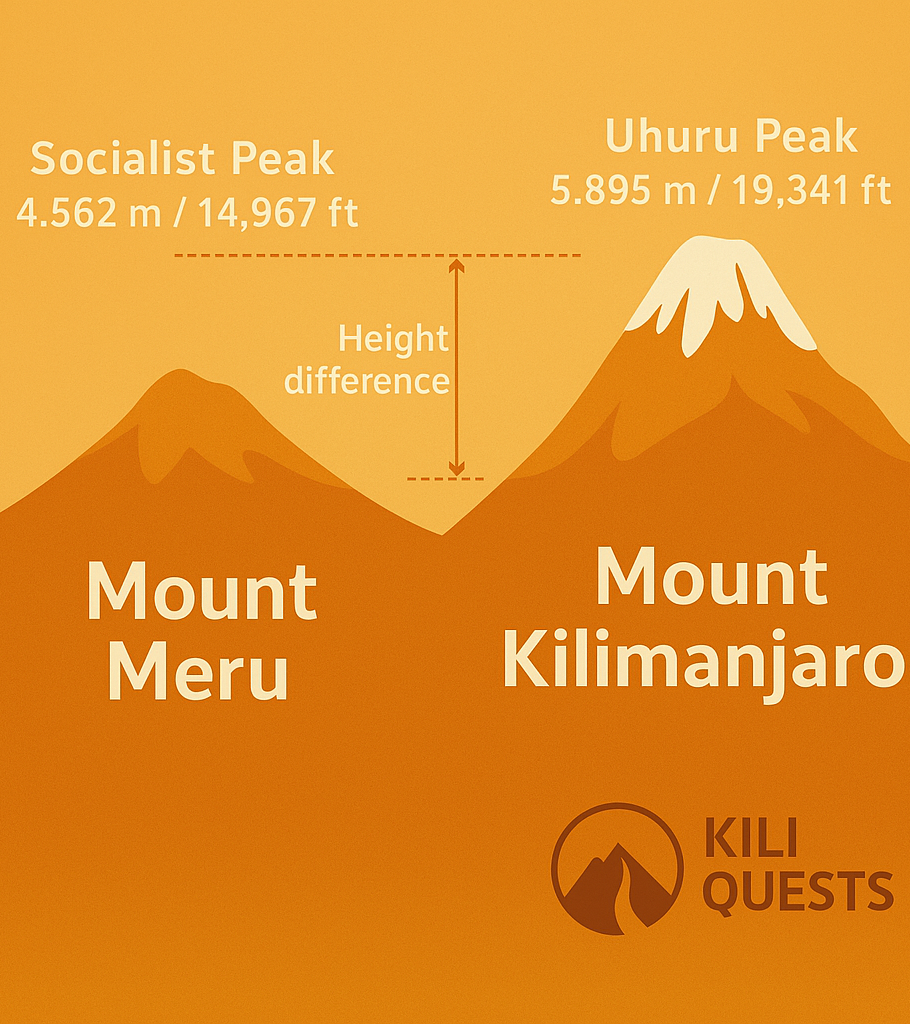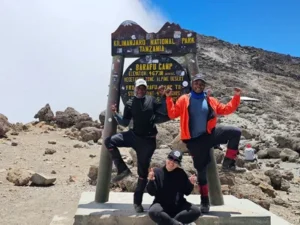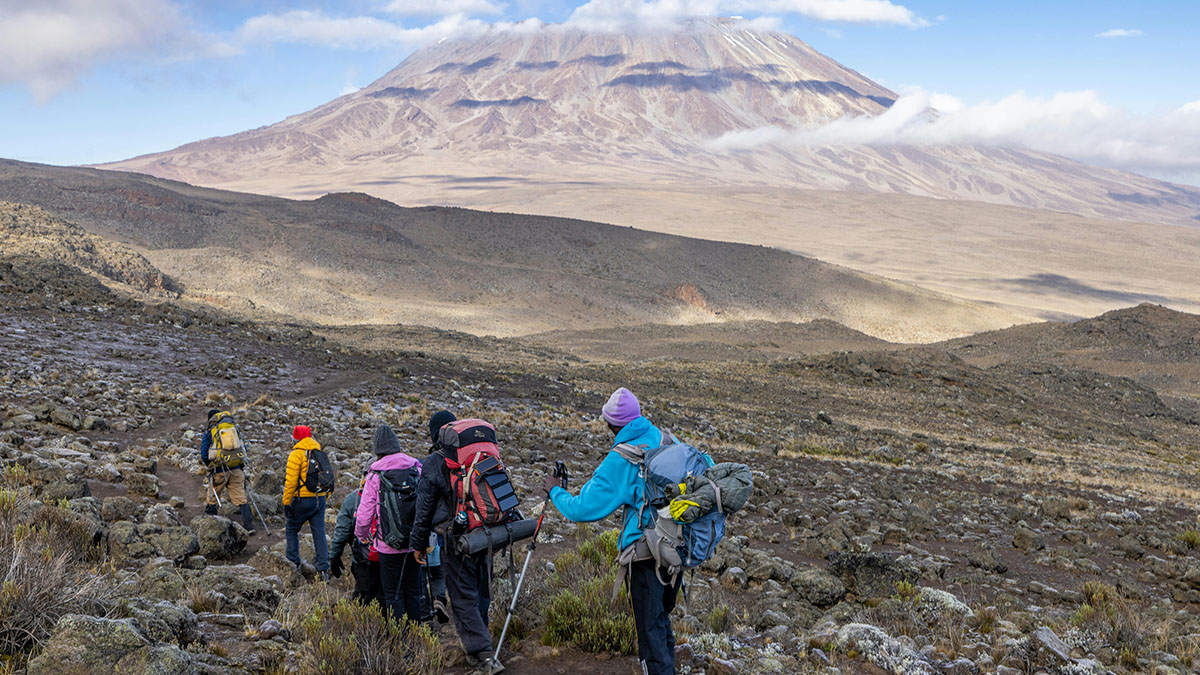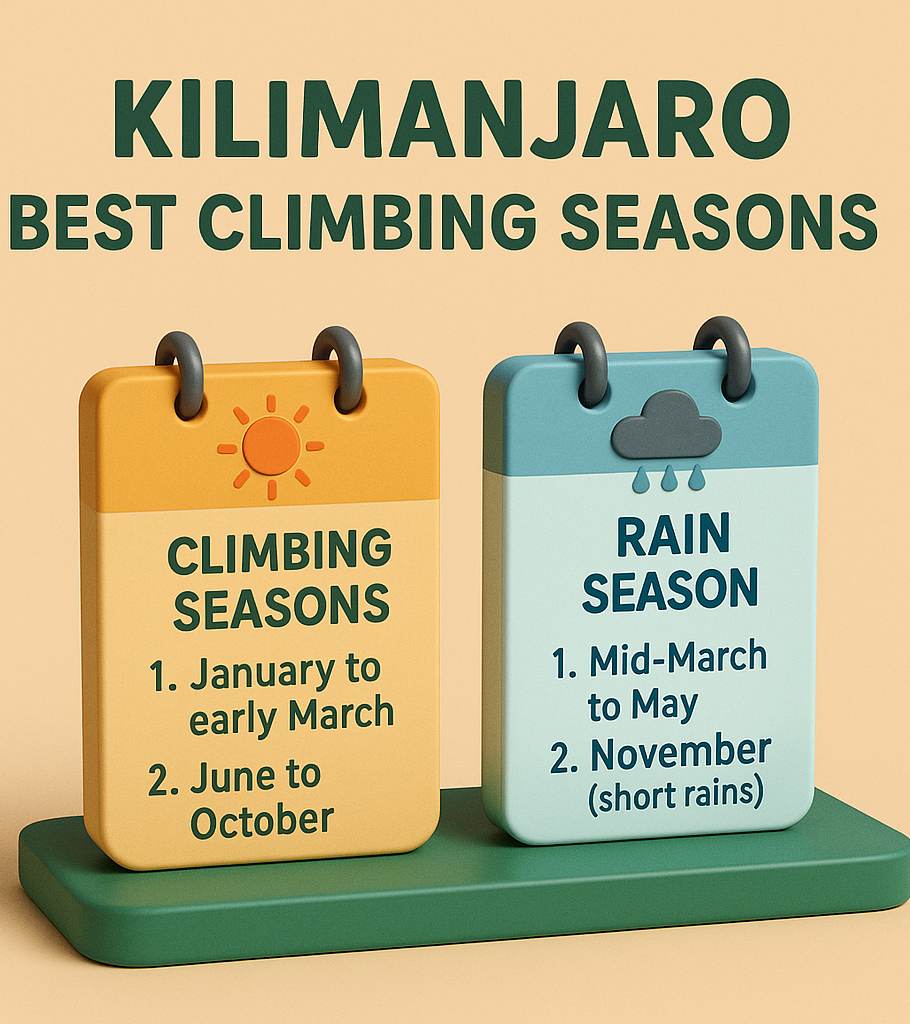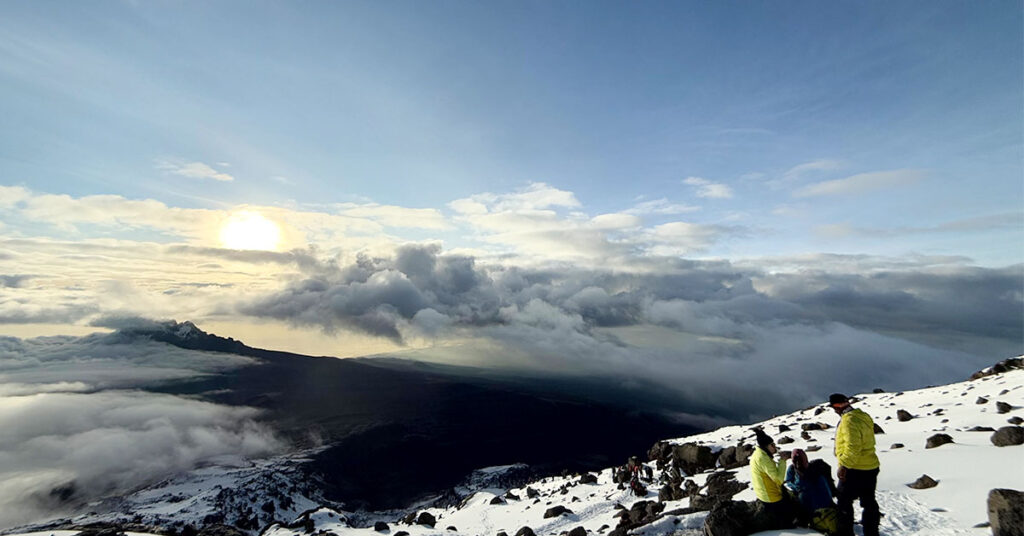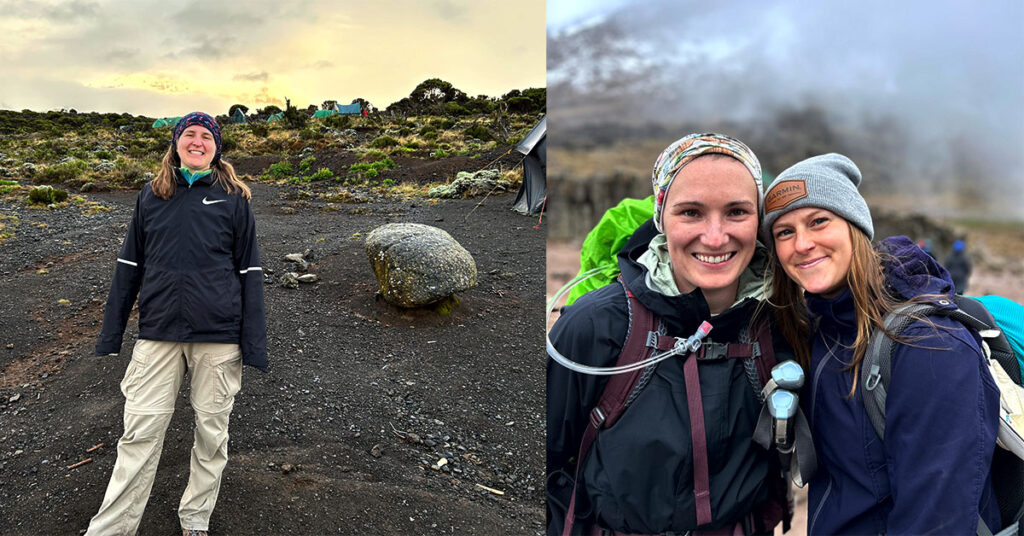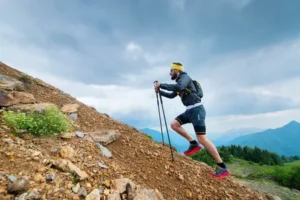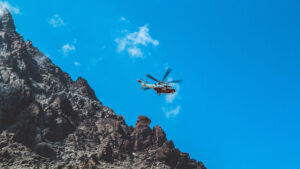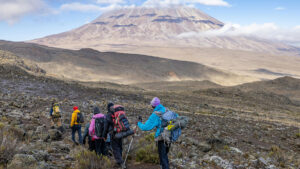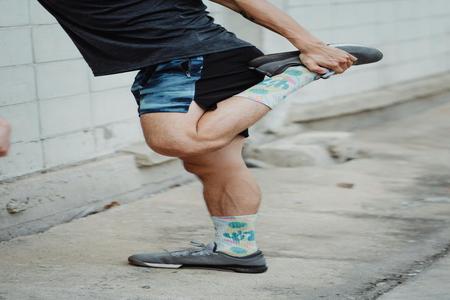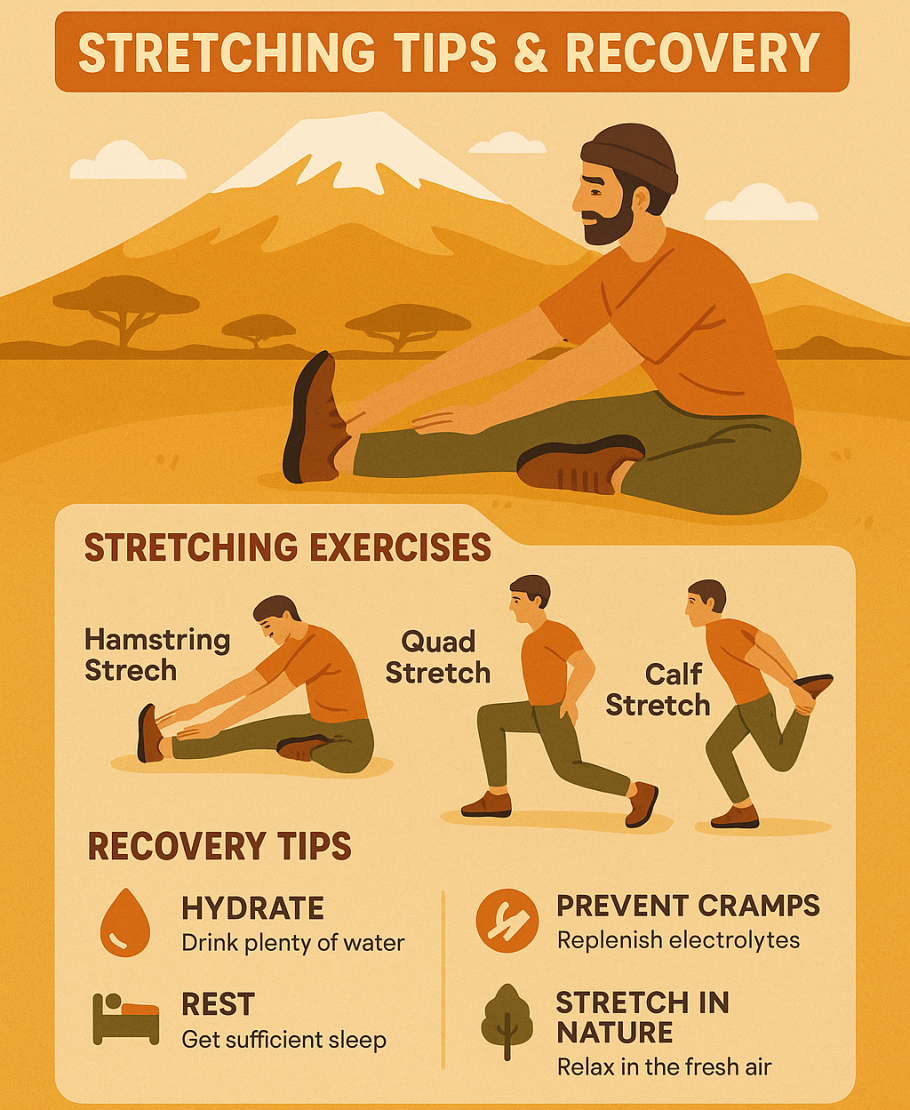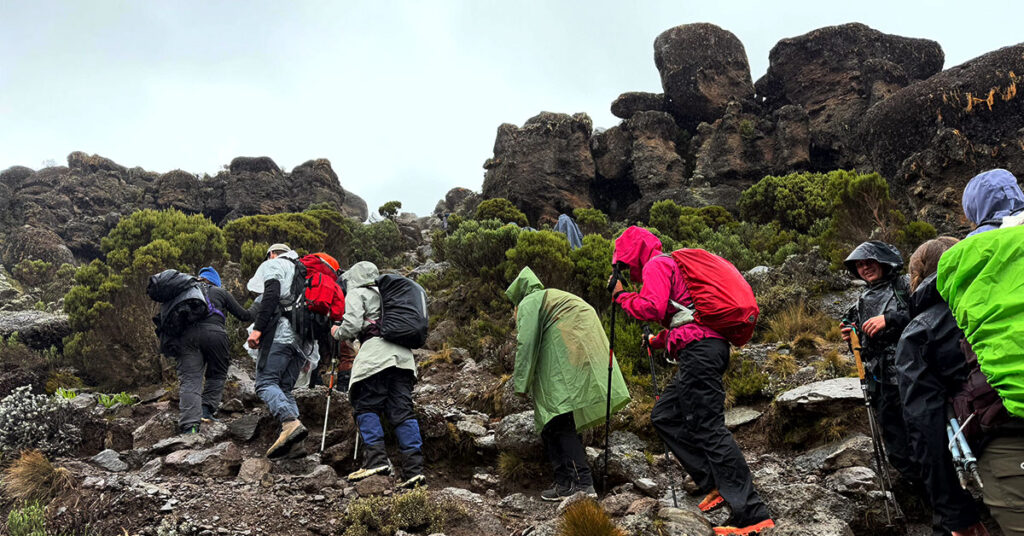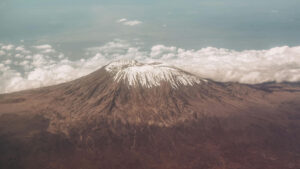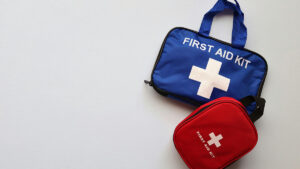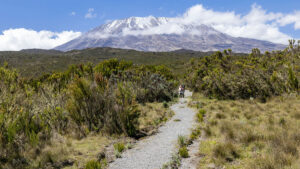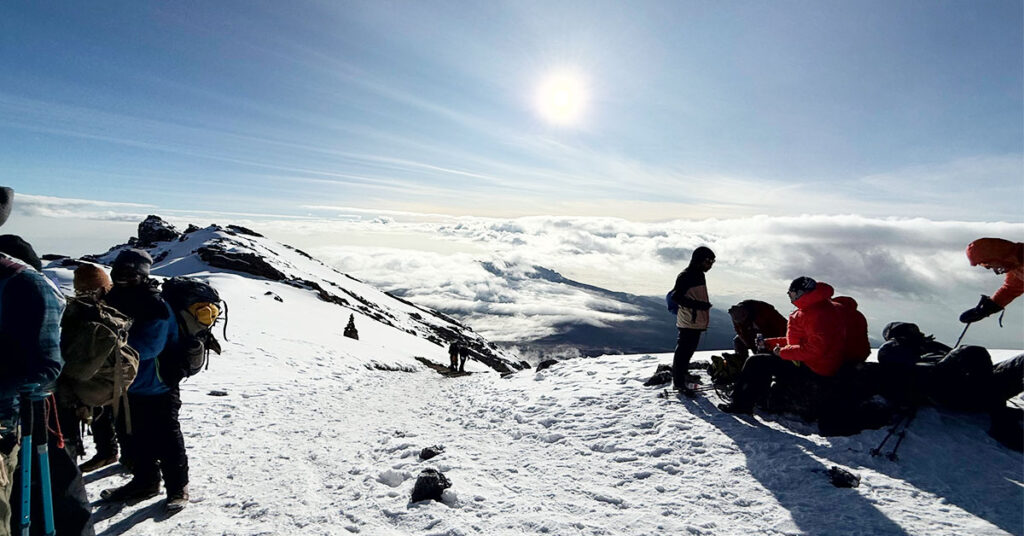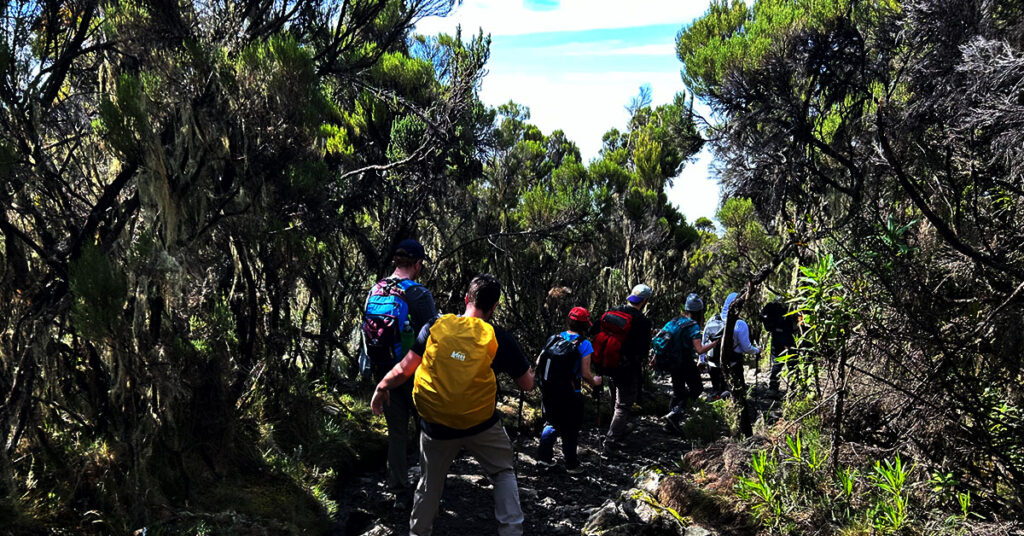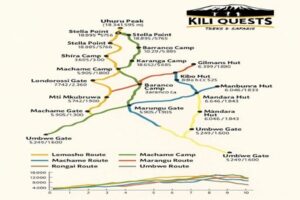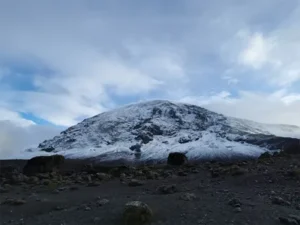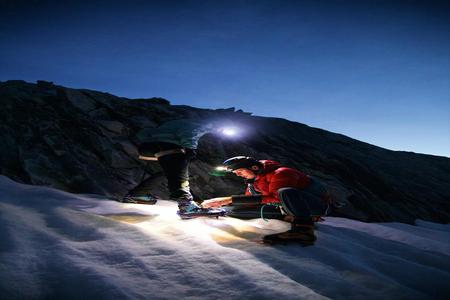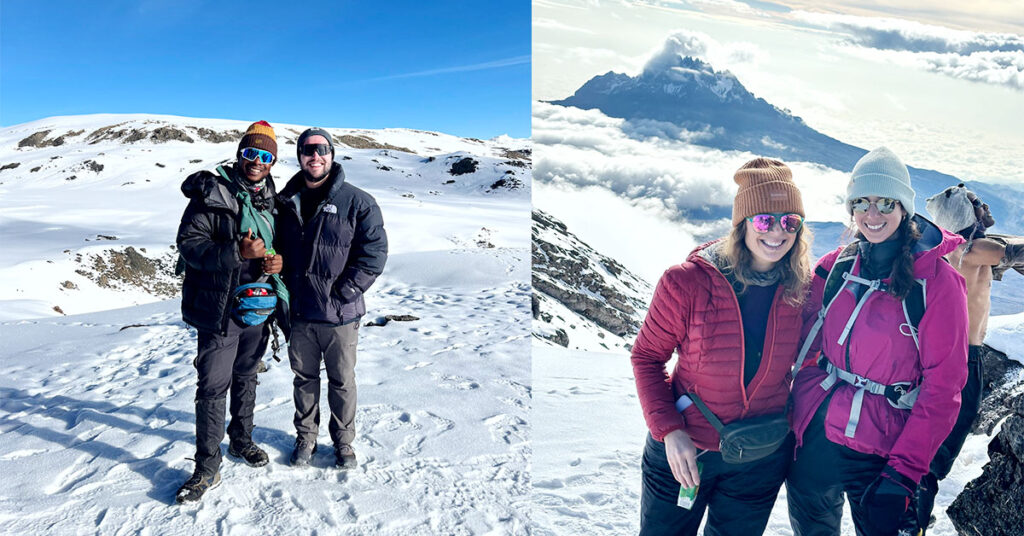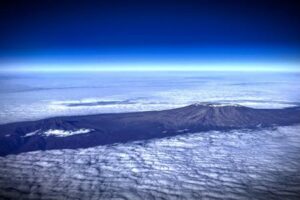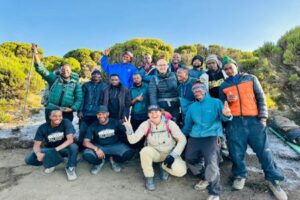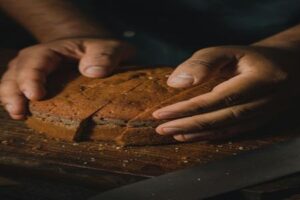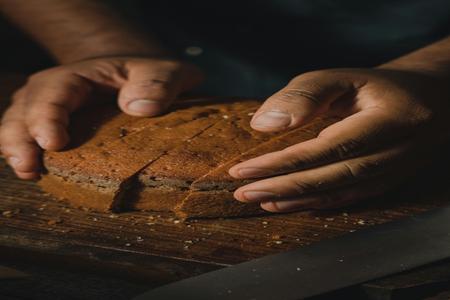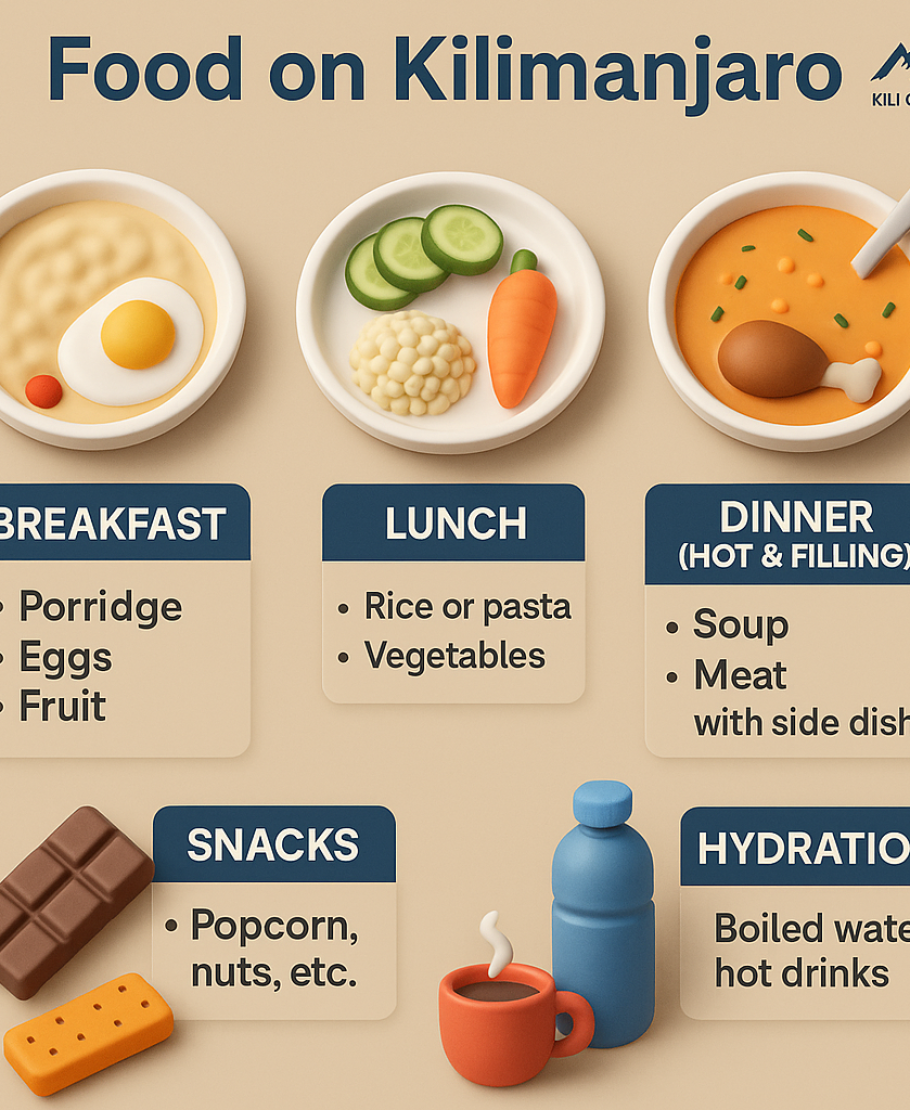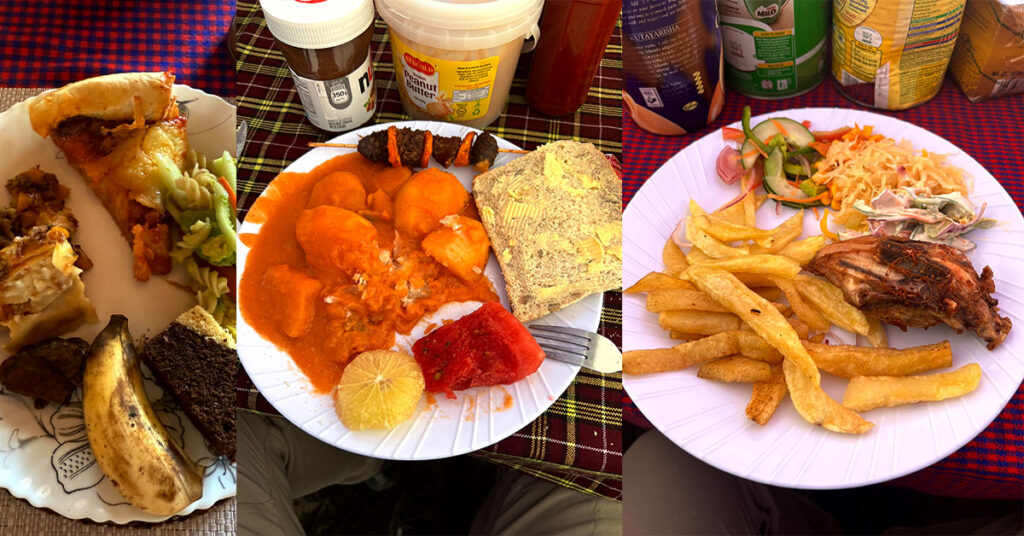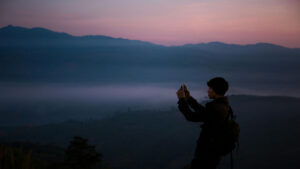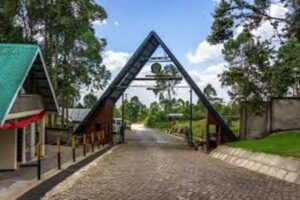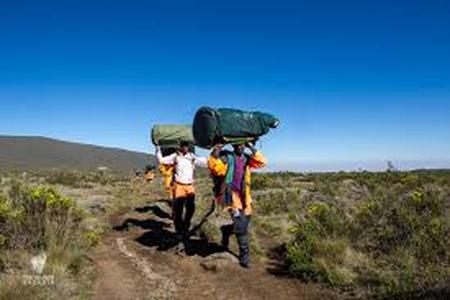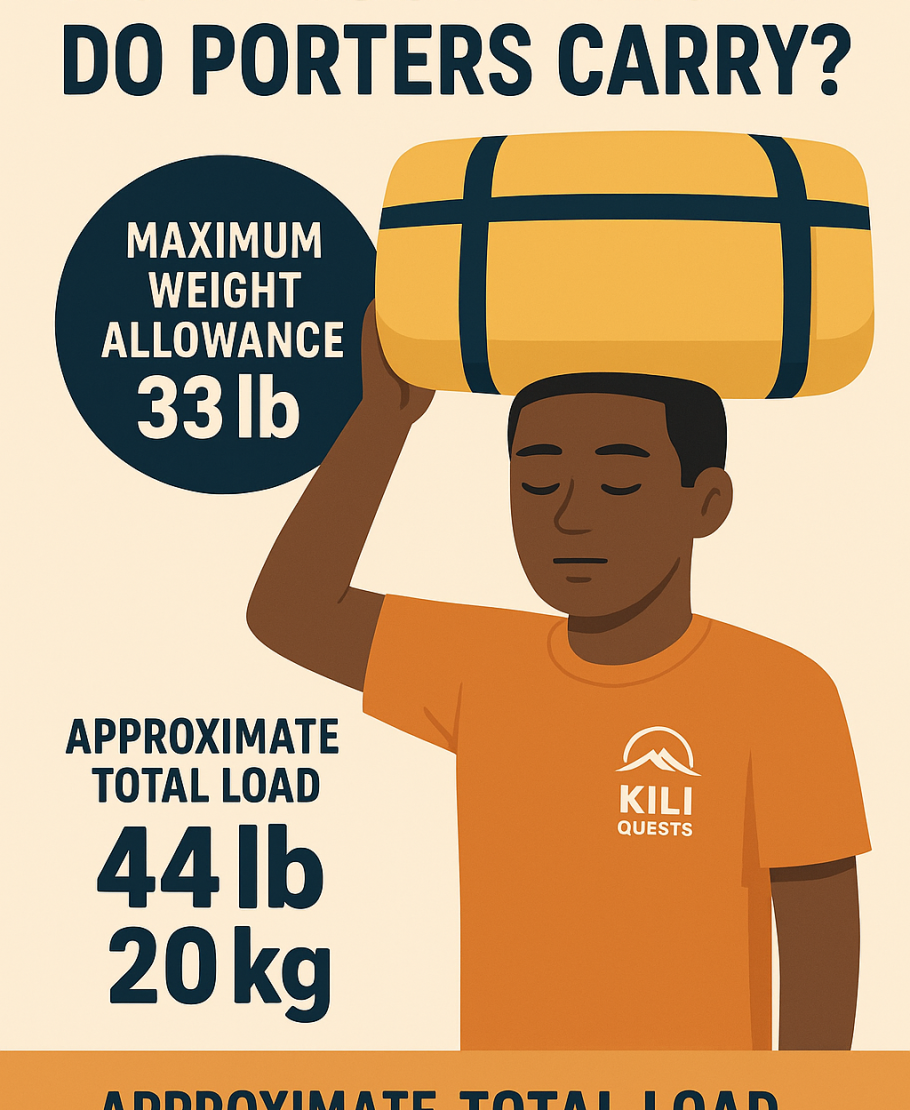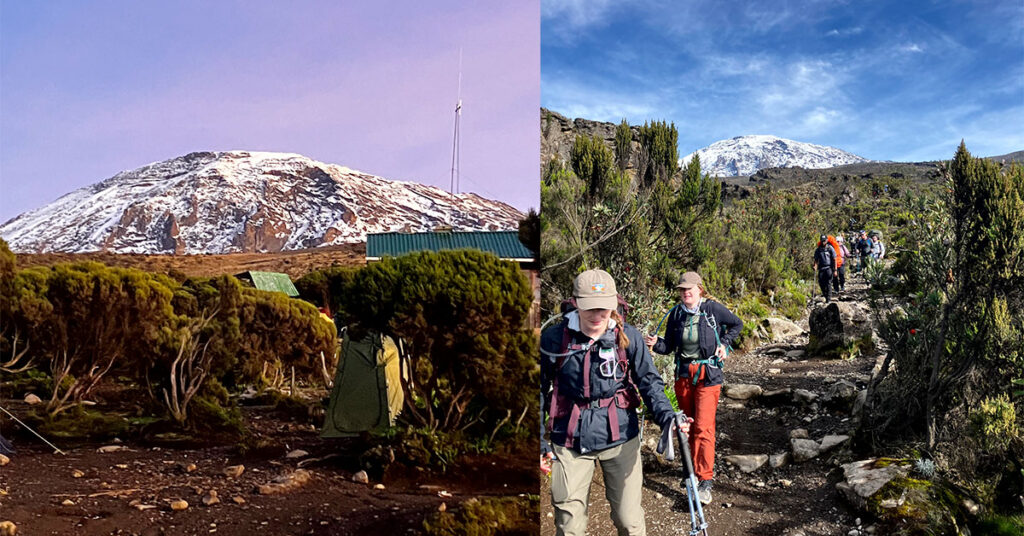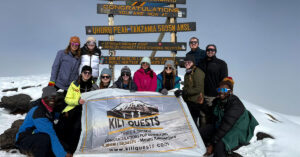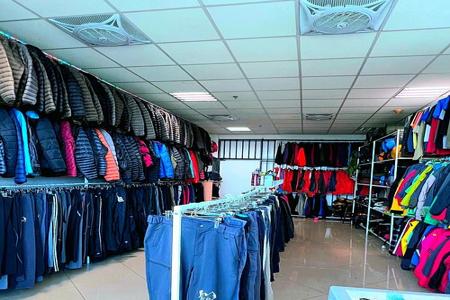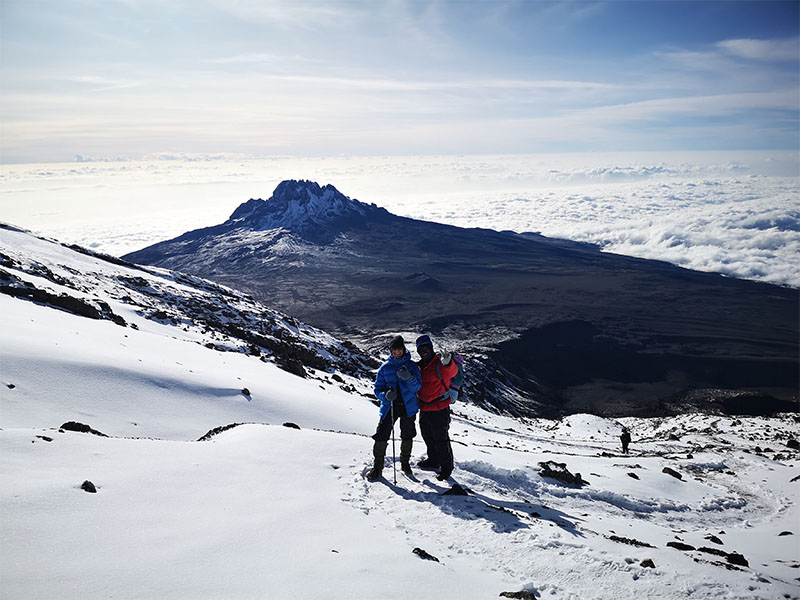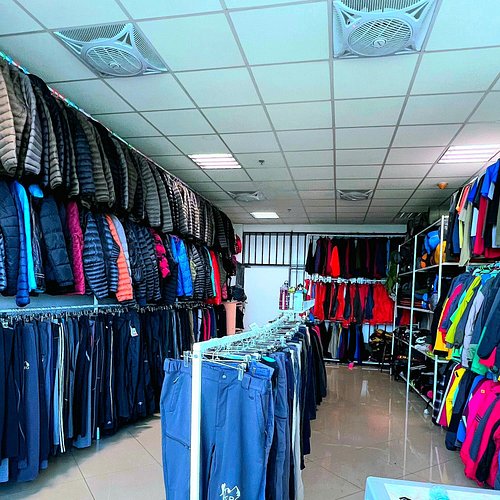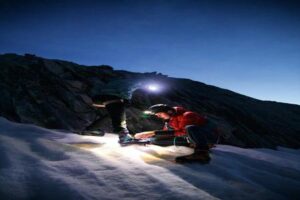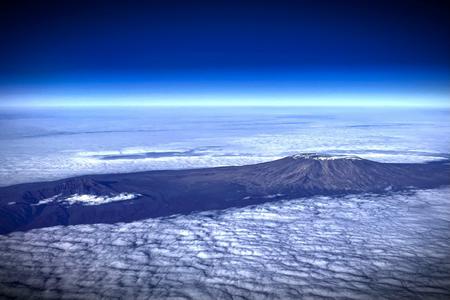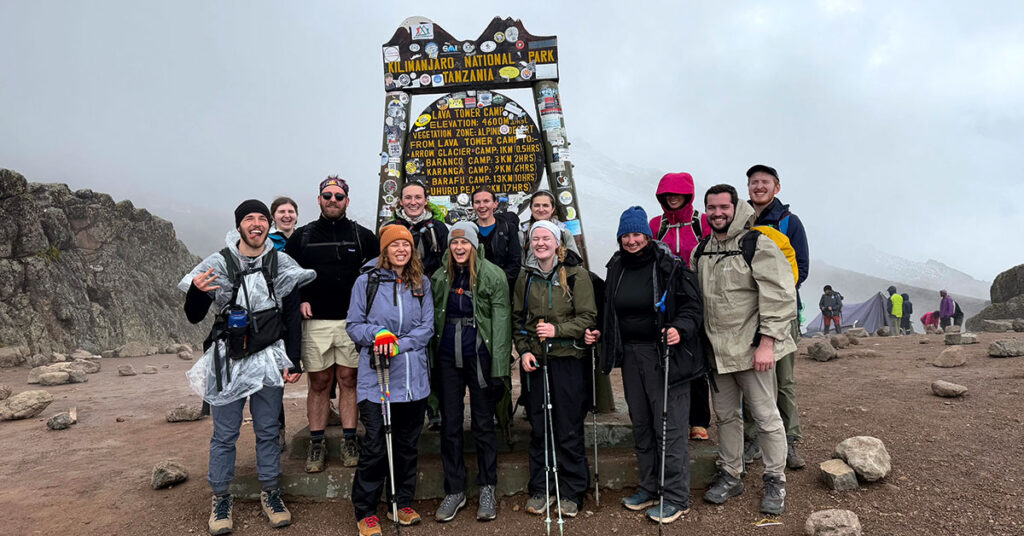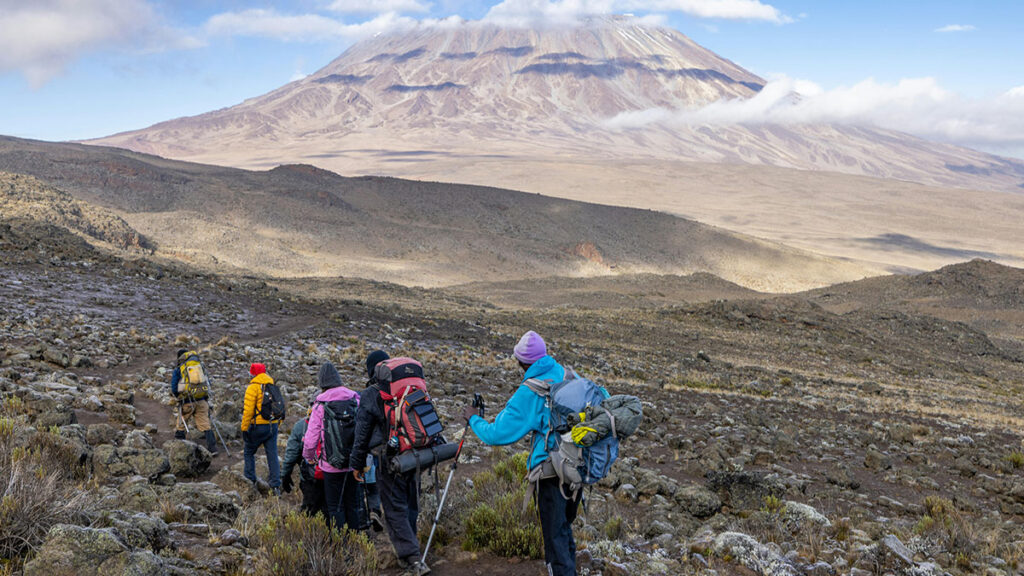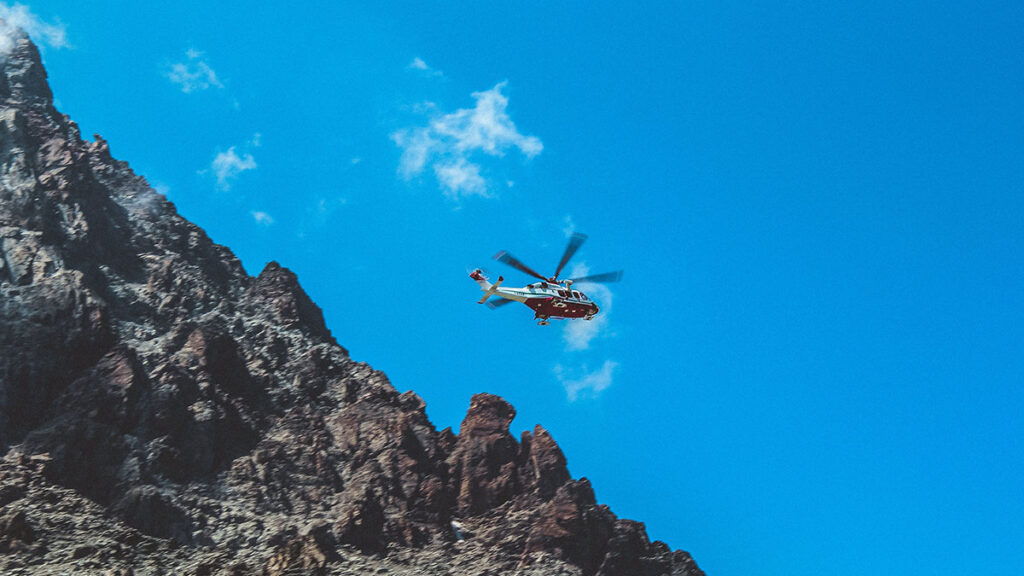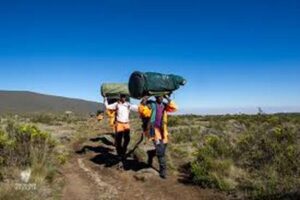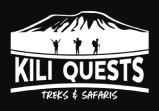Table of Contents
Top Mount Kilimanjaro Trekking Routes | Kili Quests
Climbing Mount Kilimanjaro is a dream for many, but your choice of route can make or break the experience. Each trail to the summit has unique scenery, terrain, duration, and success rates.
At Kili Quests, we guide you through the 7 official Kilimanjaro routes — helping you find the best match for your fitness, timeframe, and trekking goals.
Kilimanjaro Routes Compared: Success, Scenery & Difficulty – Quickly compare all seven routes by scenery, challenge, and success rate
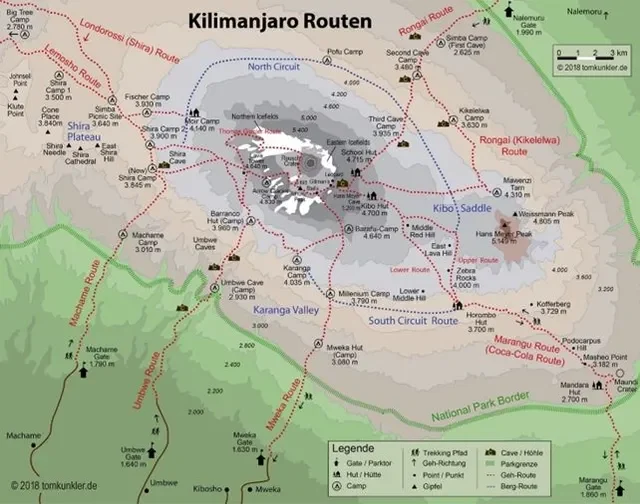
Overview of All Kilimanjaro Routes
The 7 main routes to Uhuru Peak are:
- Marangu Route – Only route with huts, short but lower success rate
- Machame Route – Scenic, steep, very popular
- Lemosho Route – Beautiful, remote, excellent for acclimatization
- Rongai Route – Quiet northern route, drier and less crowded
- Umbwe Route – Steepest and most direct path to the top
- Shira Route – High-altitude start, merges with Lemosho
- Northern Circuit – Longest, most scenic, highest success rate
Let’s explore them one by one
Marangu Route – “The Coca-Cola Route”

Known for its hut accommodations, Marangu is a straightforward, comfortable path to the summit.
- Difficulty: Moderate
- Duration: 5–6 days
- Accommodation: Mountain huts (no camping)
Why Choose Marangu:
- Shorter and easier for beginners
- Perfect if you want to avoid camping
- Quick access from Moshi
Watch out: Shorter climb = less acclimatization = lower summit success.
Machame Route – “The Whiskey Route”
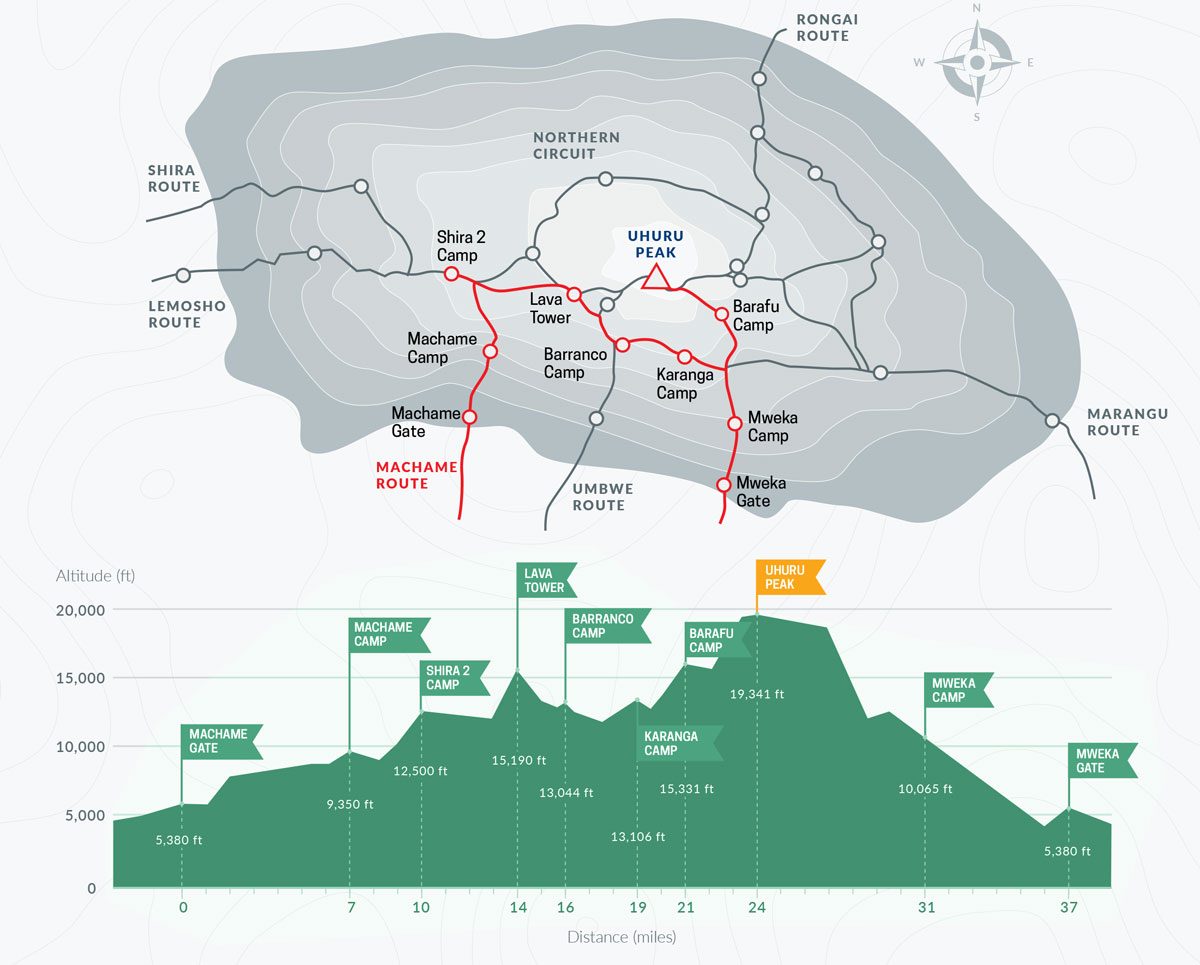
A challenging and scenic route that offers beautiful landscapes and high success rates.
- Difficulty: Challenging
- Duration: 6–7 days
- Highlights: Shira Plateau, Barranco Wall, Lava Tower
Why Choose Machame:
- Stunning scenery and diverse terrain
- Great acclimatization profile
- Most popular route for good reason
Lemosho Route – The Most Scenic Trail
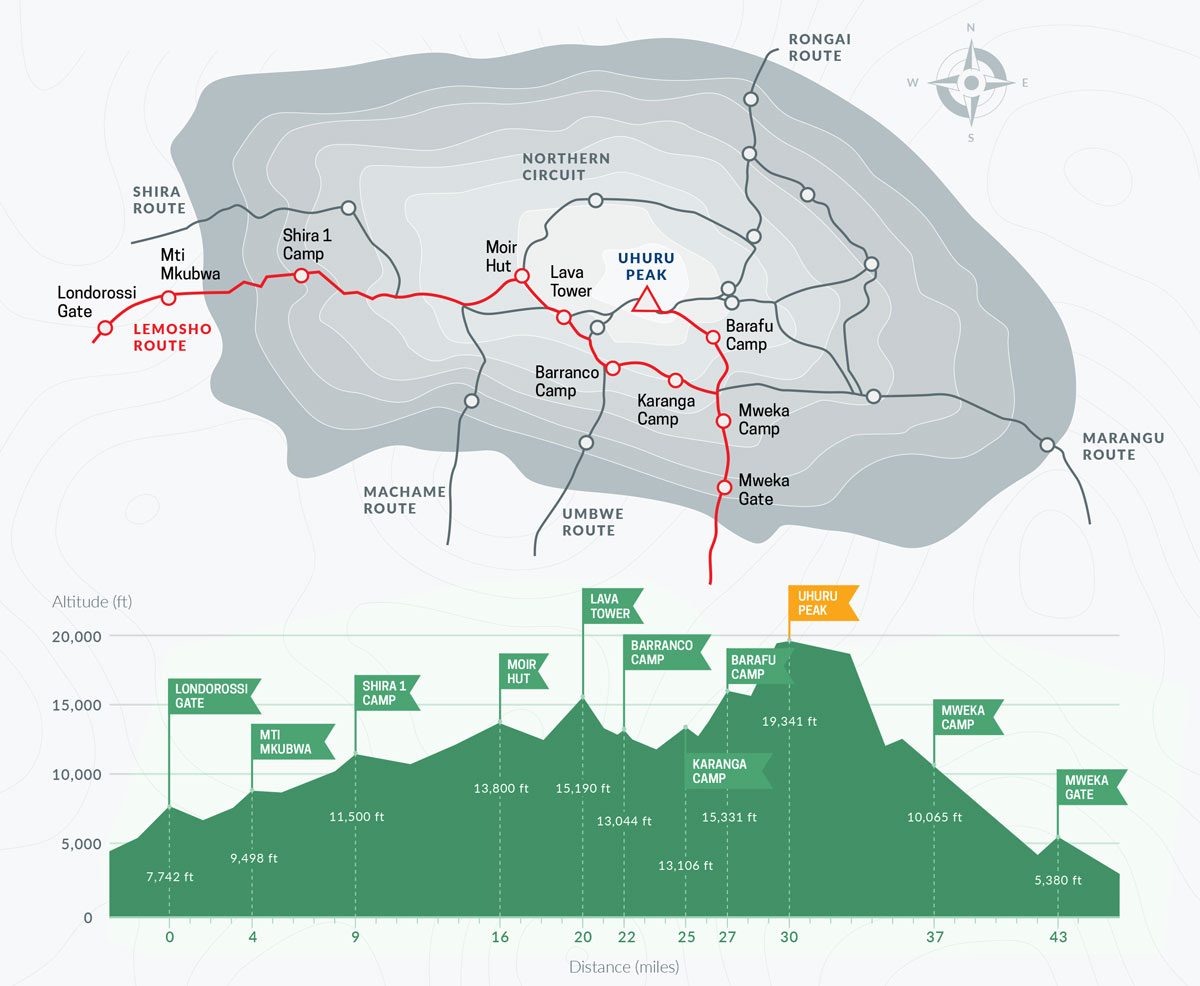
Starting from the west, Lemosho offers breathtaking views, fewer crowds, and a gradual ascent.
- Difficulty: Moderate to Challenging
- Duration: 7–8 days
- Success Rate: One of the highest
Why Choose Lemosho:
- Excellent for acclimatization
- Quiet trail for the first few days
- Perfect balance of challenge and comfort
Lemosho Route: 8-Day Itinerary & Guide – Our top-rated route — great for acclimatization and breathtaking views.
Rongai Route – The Quiet Northern Trail
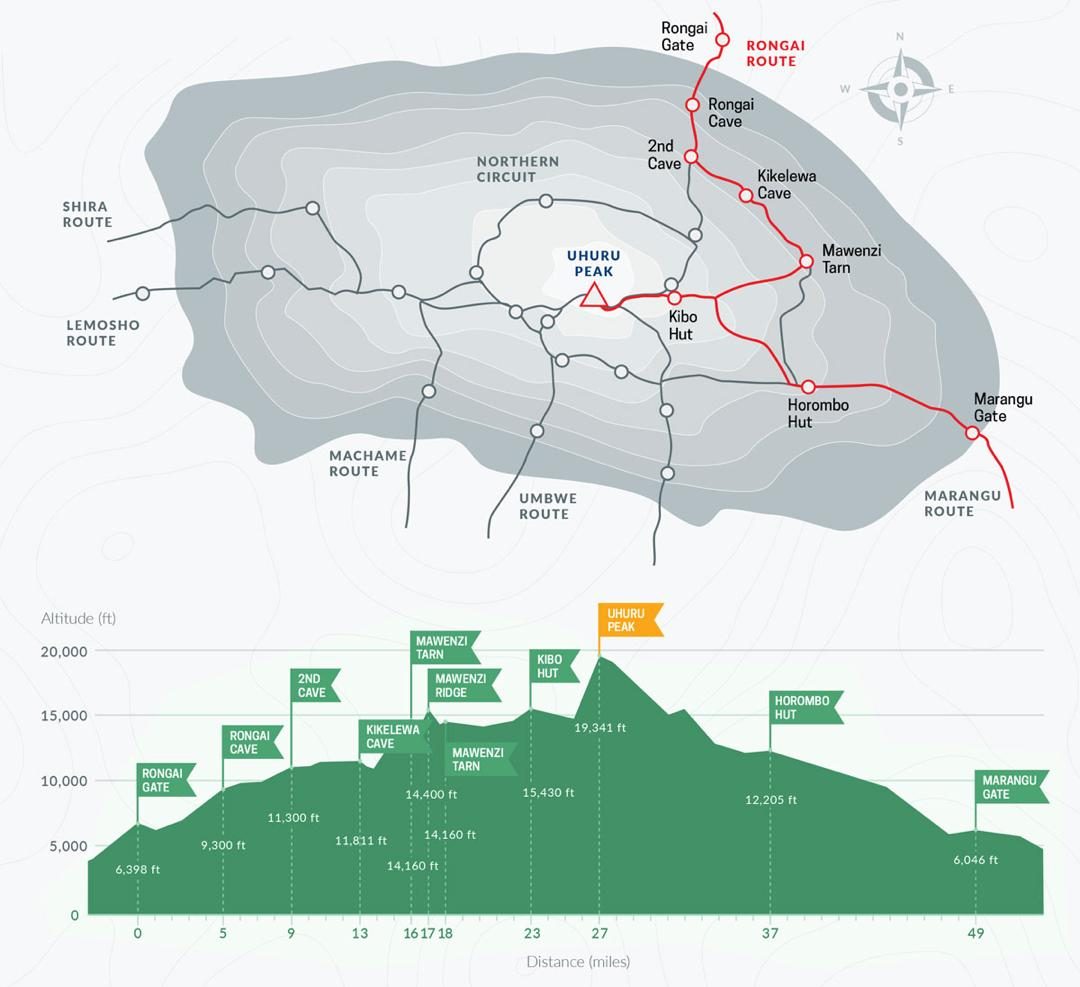
Rongai approaches Kilimanjaro from the north and offers a drier, quieter experience.
- Difficulty: Moderate
- Duration: 6–7 days
- Views: Spectacular Mawenzi Peak and Kenya’s plains
Why Choose Rongai:
- Fewer climbers = more peace
- Unique scenery from the northern side
- Gradual ascent makes it good for acclimatization
Umbwe Route – The Toughest Path
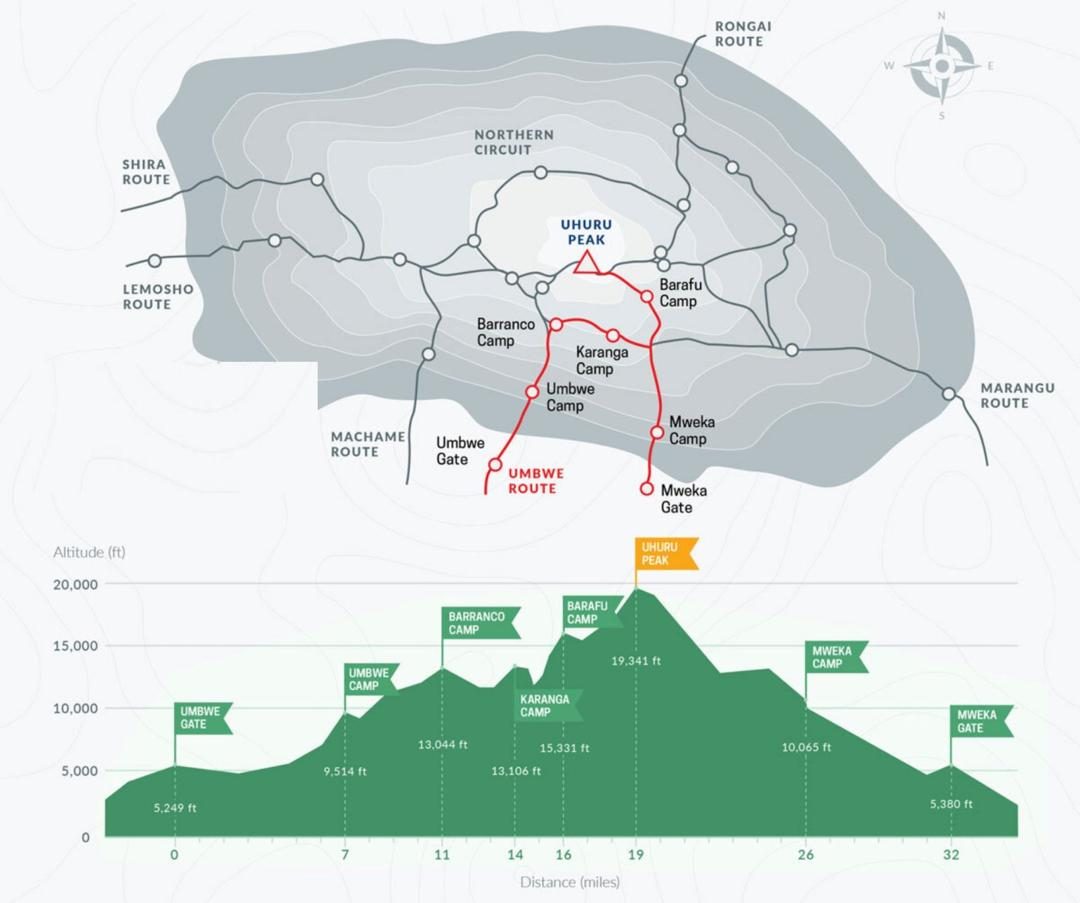
Umbwe is the steepest and most direct route, recommended only for experienced trekkers.
- Difficulty: Very Challenging
- Duration: 5–6 days
- Trail: Steep ridges and forest
Why Choose Umbwe:
- Ideal for fit, confident climbers
- Very quiet route
- Fastest ascent = higher risk of altitude issues
Shira Route – High Start, Dramatic Views
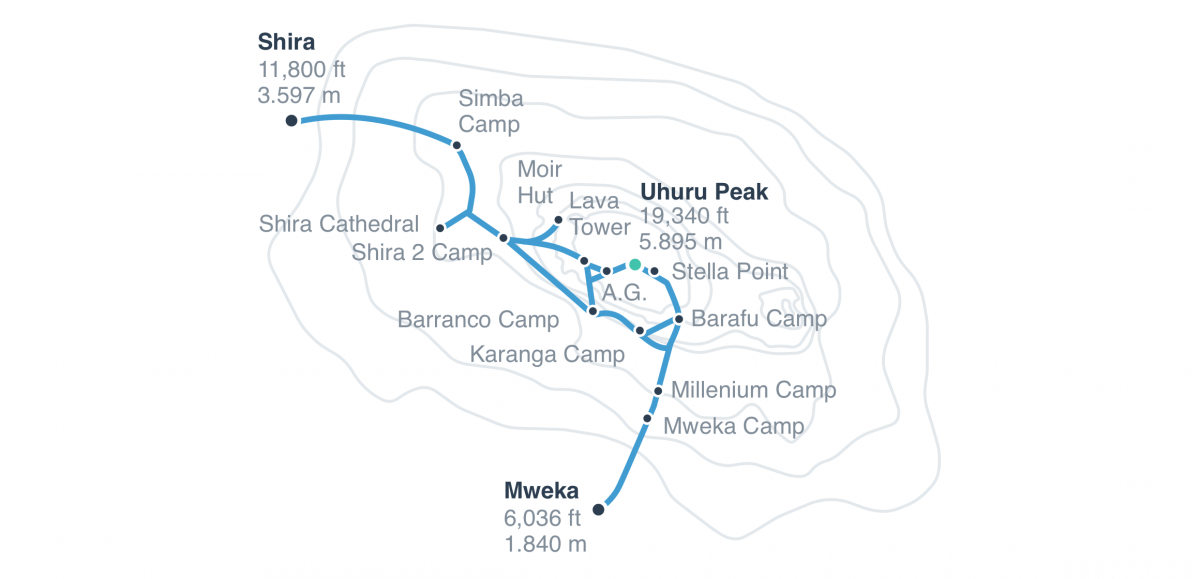
Shira begins high up at Shira Gate (3,600 m) and merges with Lemosho after Day 1.
- Difficulty: Challenging
- Duration: 7–8 days
- Start: Skips rainforest zone
Why Choose Shira:
- Great for pre-acclimatized trekkers
- Open landscapes early in the trek
- Avoids busy trails in early stages
Northern Circuit Route – Longest & Most Scenic
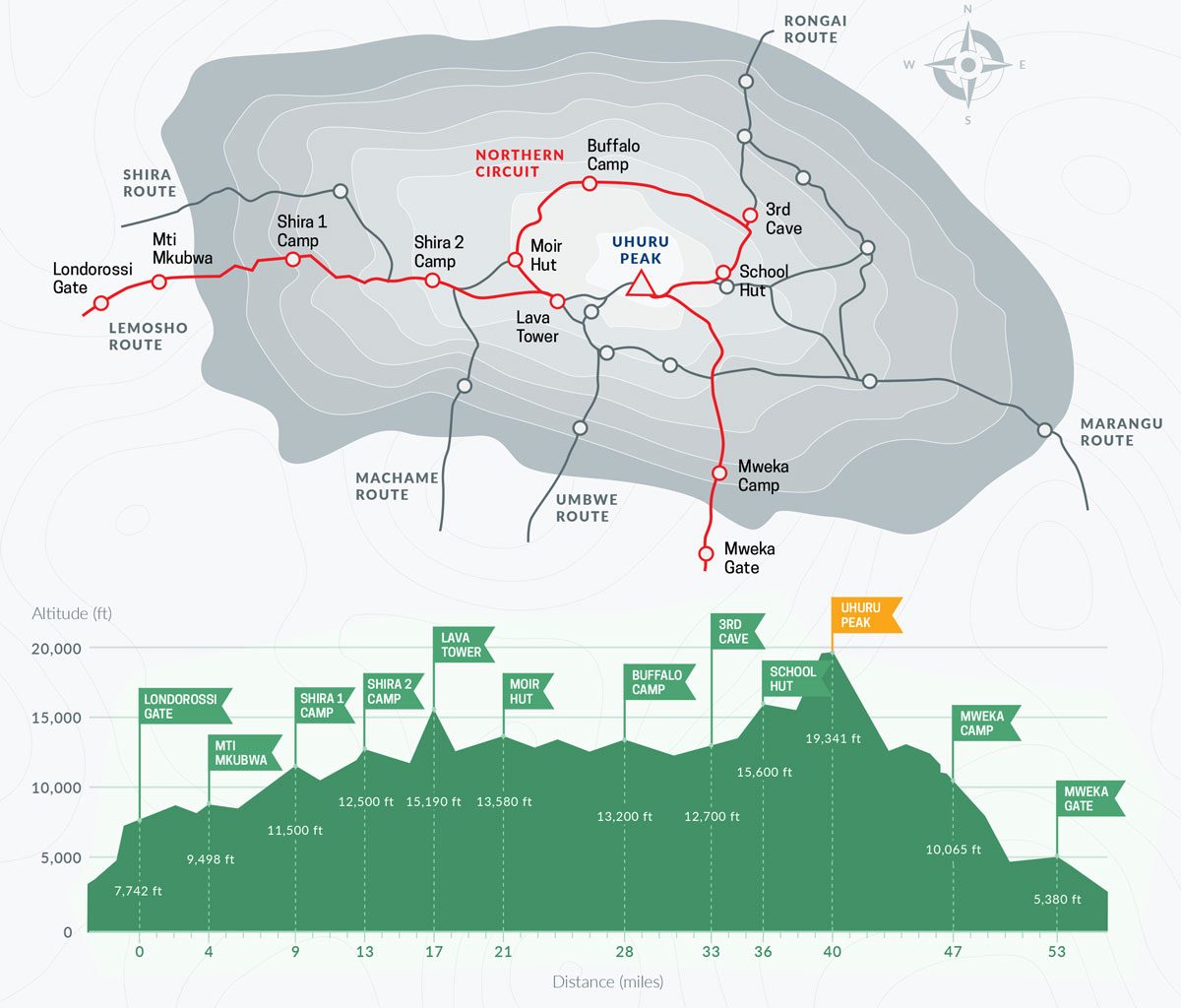
The Northern Circuit is Kilimanjaro’s longest route and circles the mountain’s remote north side.
- Difficulty: Moderate to Challenging
- Duration: 9–10 days
- Views: 360° landscapes from Tanzania and Kenya
Why Choose Northern Circuit:
- Best acclimatization = highest success rate
- Peaceful trail with minimal traffic
- Incredible photography opportunities
Northern Circuit Route: 9-Day Itinerary & Guide – Prefer a longer trek with fewer crowds? This is Kilimanjaro’s most scenic route.
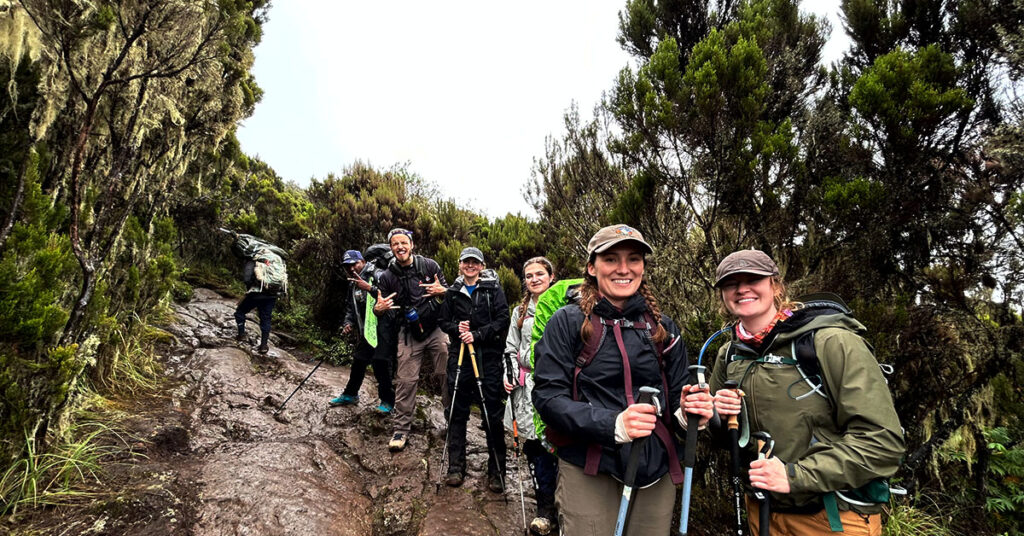
How to Choose the Right Route
Your best Kilimanjaro route depends on:
- Your fitness level – Steep or gradual trail?
- Time available – Short trip or longer adventure?
- Comfort preference – Hut vs. tent camping?
- Desire for scenery vs. solitude
Why Kilimanjaro Is One of Africa’s Most Iconic Landmarks – Discover what makes Kilimanjaro’s routes so legendary.
Plan Your Kilimanjaro Adventure with Kili Quests
At Kili Quests, we specialize in guiding climbers on every official Kilimanjaro route — from the tranquil Rongai to the scenic Lemosho and the epic Northern Circuit.
Talk to our expert team today. We’ll help you choose the perfect route, gear up, and make your climb safe, successful, and unforgettable.
Ready to pick your path? Contact us now to start planning your Kilimanjaro trek.
Related Articles
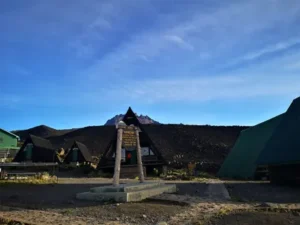
Marangu Route: Hut-Based Kilimanjaro Trek
April 15, 2025
No Comments
Table of Contents Marangu Route on Kilimanjaro: Hut-Based Kilimanjaro Trek Why Choose the Marangu Route? The Marangu Route is one of the most historic and

Mount Meru Trek: Why Climb It Before Kilimanjaro?
April 11, 2025
No Comments
Table of Contents Mount Meru: Tanzania’s Scenic Volcano Trek | Kili Quests Mount Meru, Tanzania’s second-highest peak at 4,566 meters (14,968 feet), is a stunning

Lemosho Route: Scenic Kilimanjaro Trail
April 15, 2025
No Comments
Table of Contents Lemosho Route on Kilimanjaro: Scenic Views & High Success Rate Why Choose the Lemosho Route? The Lemosho Route is widely regarded as


